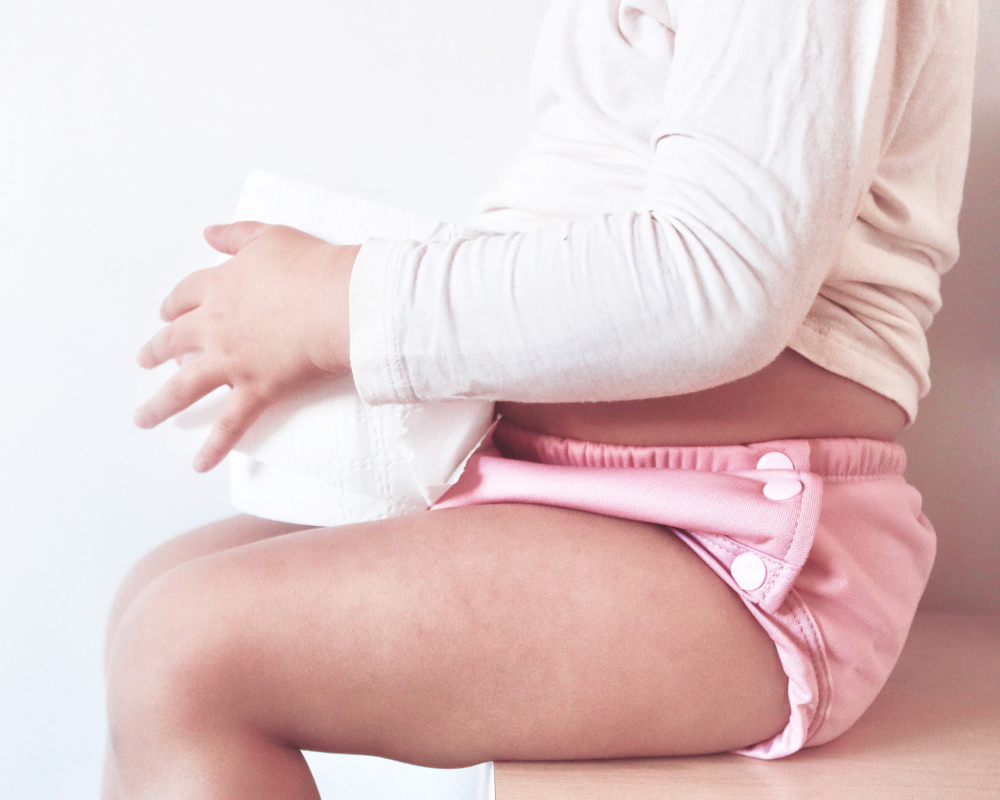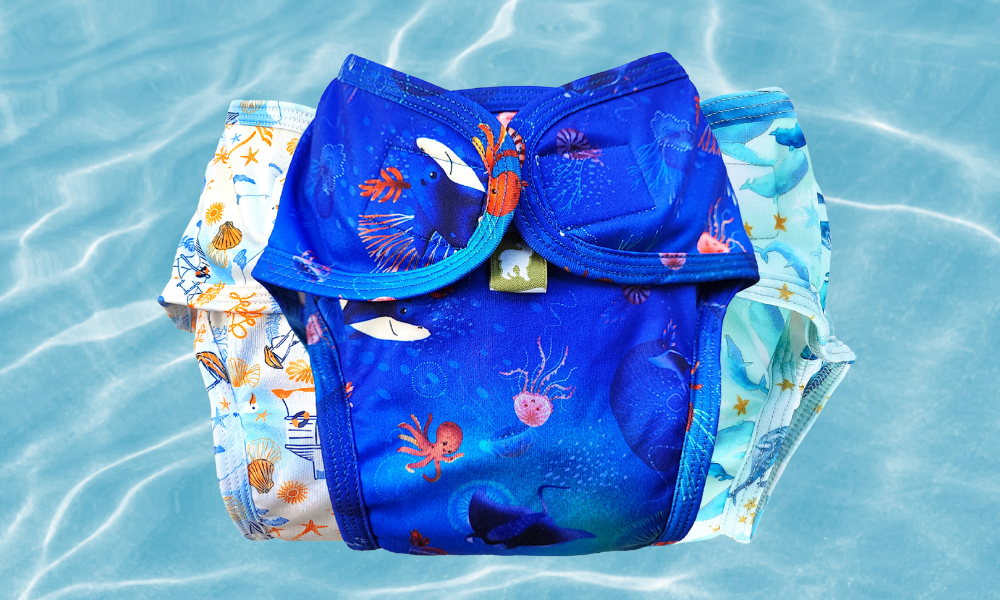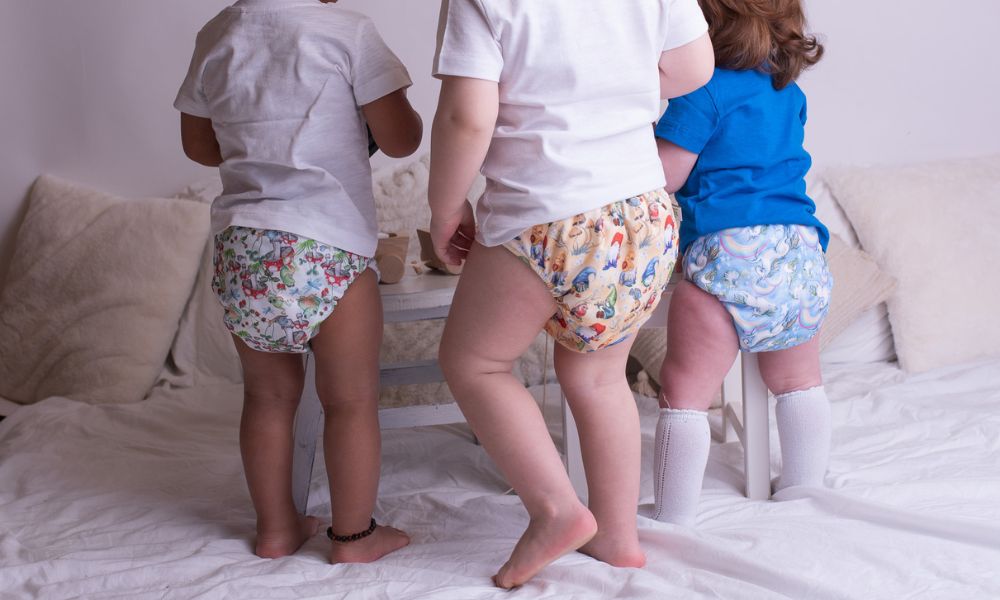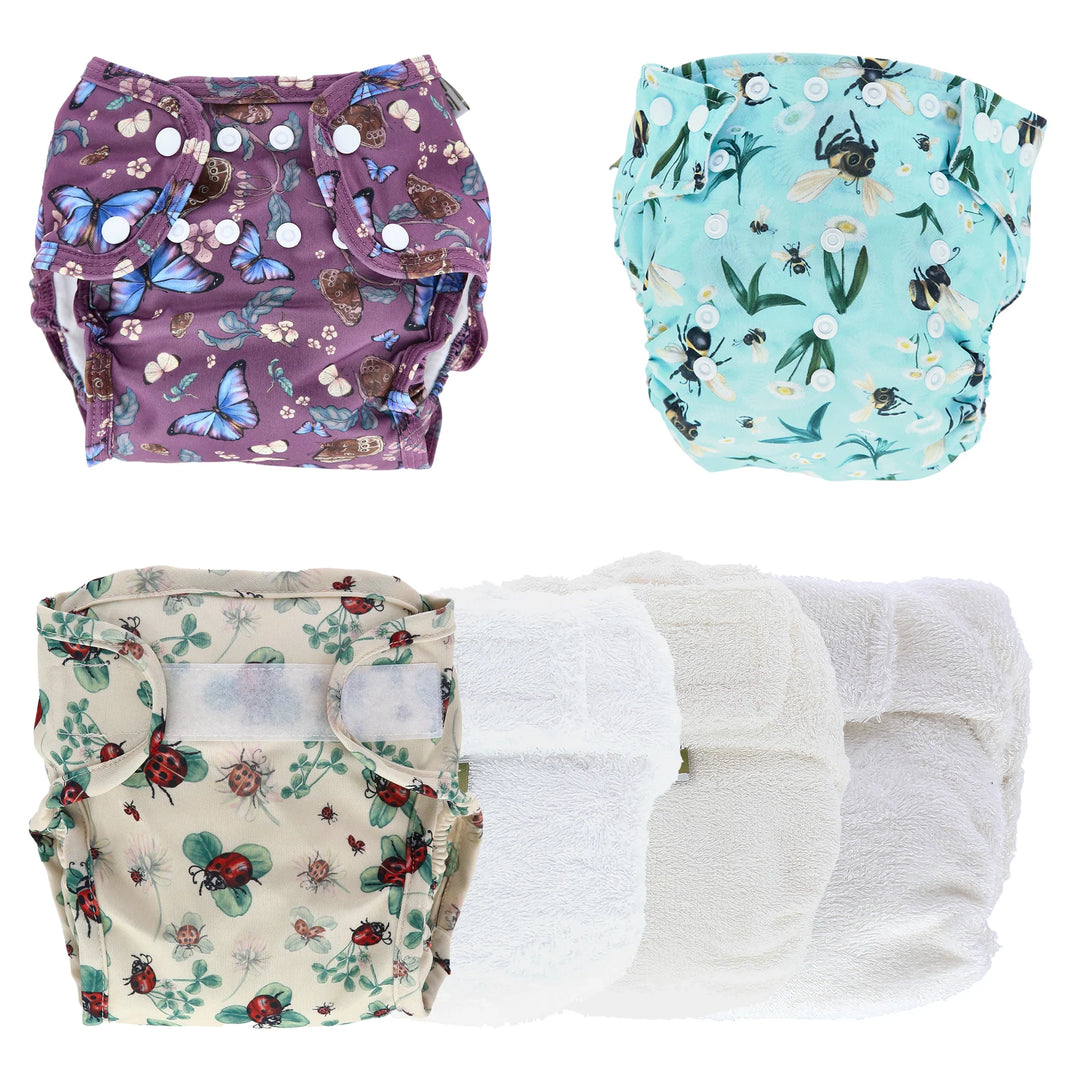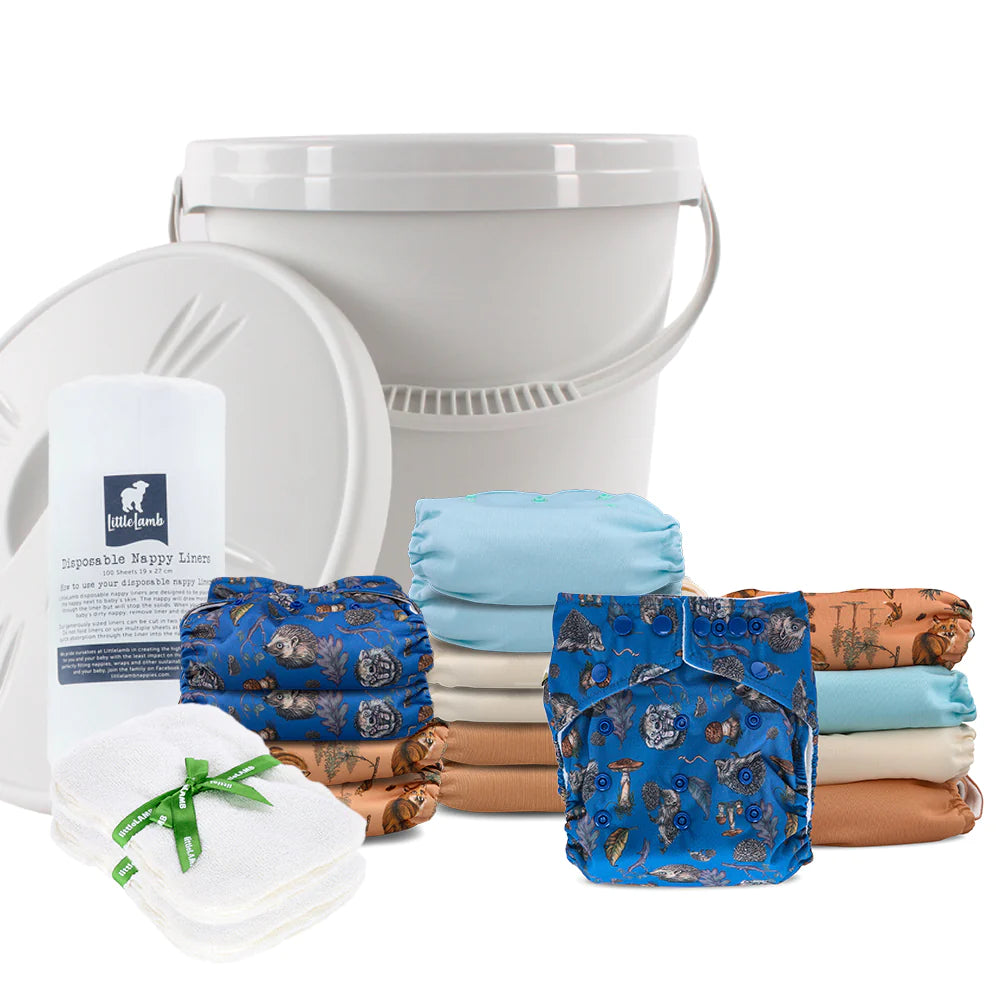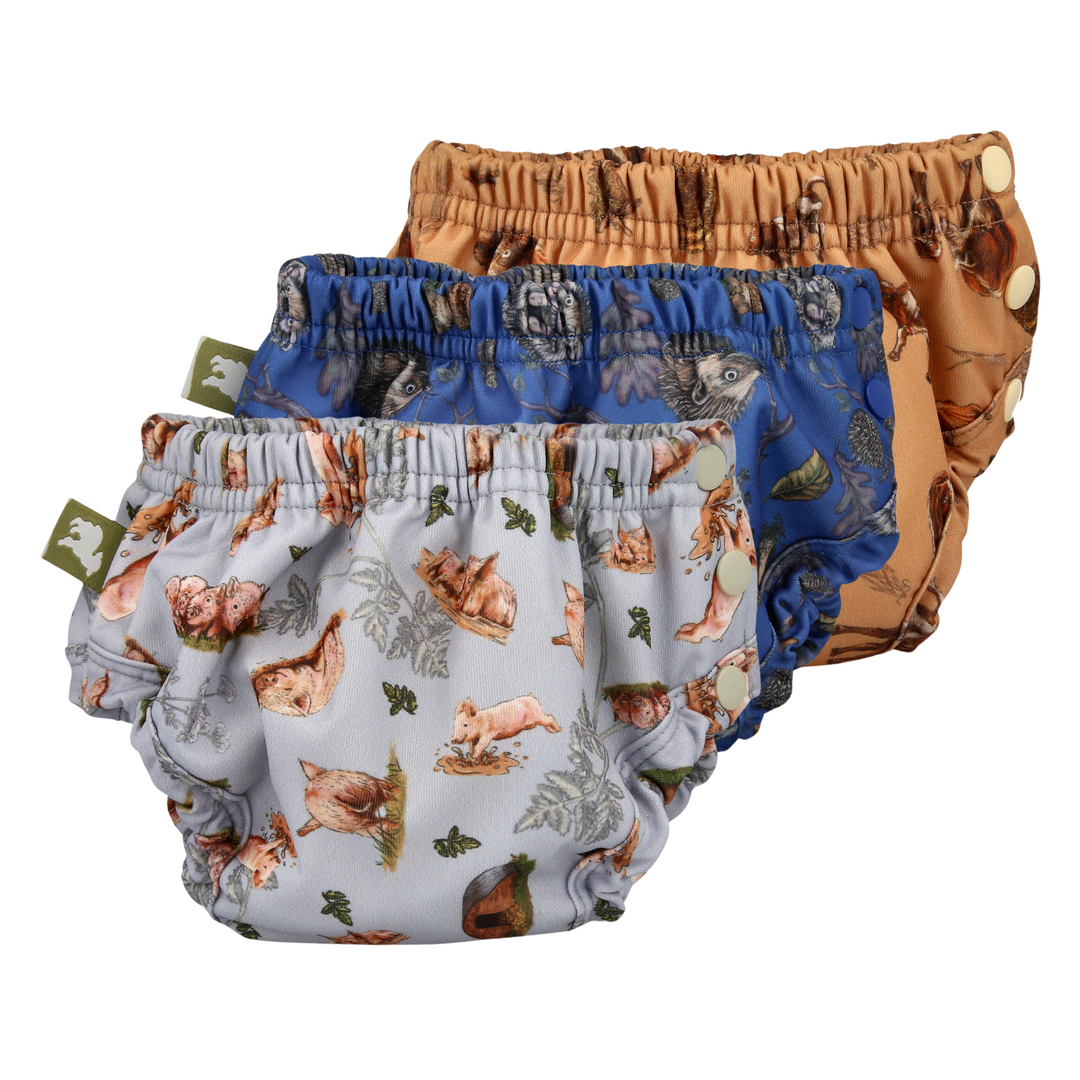Many people turn to cloth nappies not just for their positive environmental impacts and money-saving abilities, but also for the excellent level of containment they offer! We are confident that if you have the right nappies for your circumstances and know how to use them properly, you should find them at least as reliable as disposables, if not more so.
If you are left wondering, why do my cloth nappies leak? We can help you pinpoint the reasons behind cloth nappy leaking, and provide simple and effective solutions.
Continue reading for our trouble shooting questions.

Is the nappy being changed frequently enough?
If the nappy is totally sodden a leak can happen. While it does vary from baby to baby, a new born should last 2 hours but after the nappy should last around 3 hours. It is only overnight that you should leave a nappy on longer than this. So, if the nappy is lasting 3 hours before leaking, it is a case of it need changing. This is just a guide as what goes into the nappy will eventually come out, so timeframes are only a rough guide.
Is baby’s clothing too tight?
A common cause of leaks is tight clothing over the nappy. We call them pressure leaks, as the leaks are caused by clothing squeezing on a wet nappy, which is like squeezing a wet sponge/cloth, liquid will come out.
We are all guilty of letting the vest get too snug as babies grow so quickly, but the pressure from an over tight vest (the ones that popper underneath) can cause a leak, you can get vest extenders for use with real nappies or just ensure they do not get too snug. The same effect can happen with all clothing that is overly tight, tights on girls, babygrows etc, so just ensure nothing is tight and putting excess pressure on the wet nappy.
Do you need more boosters?
The leaks could be a result of insufficient absorbency, if only using 1 booster, add in the second one. If you find that the 2 boosters are not absorbent enough, then some more bamboo boosters will be needed (especially for overnight) as 3 maybe required for sufficient absorbency. For a boy or tummy sleeper, fold one of the boosters in half and pop it at the front of the nappy where the absorbency is needed.
Are the boosters/inserts correctly placed?
Ensure the boosters/inserts reaches to each side of the nappy tight to the leg elastic, as any gap may allow liquid to miss the booster, and cause a leak, you may need to overlap the boosters slightly, or for the pocket inserts fold in half rather than tri fold.
You can over stuff a pocket nappy, this will change the shape of the leg opening and may cause gaping which will allow a leak, if using 3 or more boosters try popping one inside the nappy rather than inside the pocket, or use a single size 1 booster for the 3rd, as these are slimmer it does not alter the leg area as much.
If still using the rise poppers on the Onesize, undo just the middle one to allow more room for lots of boosting without altering the leg shape, this does not work for all, but can for some.
Do you need to combine your fabrics?
Once at toddler age, little one can start to hold their pee and let it go in a flood. This can be too much too fast for the bamboo to absorb quickly enough. Bamboo is very absorbent but does not absorb the liquid very quickly, microfibre is great at grabbing liquid quickly, though it is not as absorbent as bamboo. It is a good idea, if little one is flooding, to layer a microfibre booster with a bamboo booster - place a microfibre booster on top of the bamboo booster.
Nappy cream residue?
Have any nappy creams been used recently? It could be that the cream has left a residue on the fleece and is slowing down the rate at which the pee passes through to be absorbed, so some liquid is escaping before it has been absorbed. Fleece needs pressure to allow liquid to pass through. A test you can do is to drop some liquid on the fleece, it may pool in droplets, press the droplet gently with your finger to see if it passes through the fleece, it is does not pass through then there maybe build up in the fleece.
Do you use a liner with the nappy?
If using disposable liners the ensure that you cut them in half if too big as folding does not allow the liquid to pass through quickly enough and may allow leaks.
If using a fleece liner, try leaving this out, as it can happen that the double layer of fleece is not letting the liquid be absorbed quickly enough into the nappy. The nappy is fleece lined so it is not necessary to use a fleece liner.
If using home made fleece liners, please try the nappy without this, as not all fleece allows liquid to pass through.
Check the fit!



You can also watch our tutorial on How to Fit a Onesize Pocket Nappy below:
Also when the nappy is on ensure any loose fabric under the poppers at the front is tucked upwards, simply insert your finger to push it upwards.
If your little one is very small or petite, you may find that a good fit is not achieved until at least 10lbs, or with skinny legs it could be more like 12lbs or more. So it maybe that you need to wait a couple of weeks until a little more weight is gained. The nappy will then fit well and will not leak.
If you need any further help with your nappies, please get in touch care@littlelamb.com





